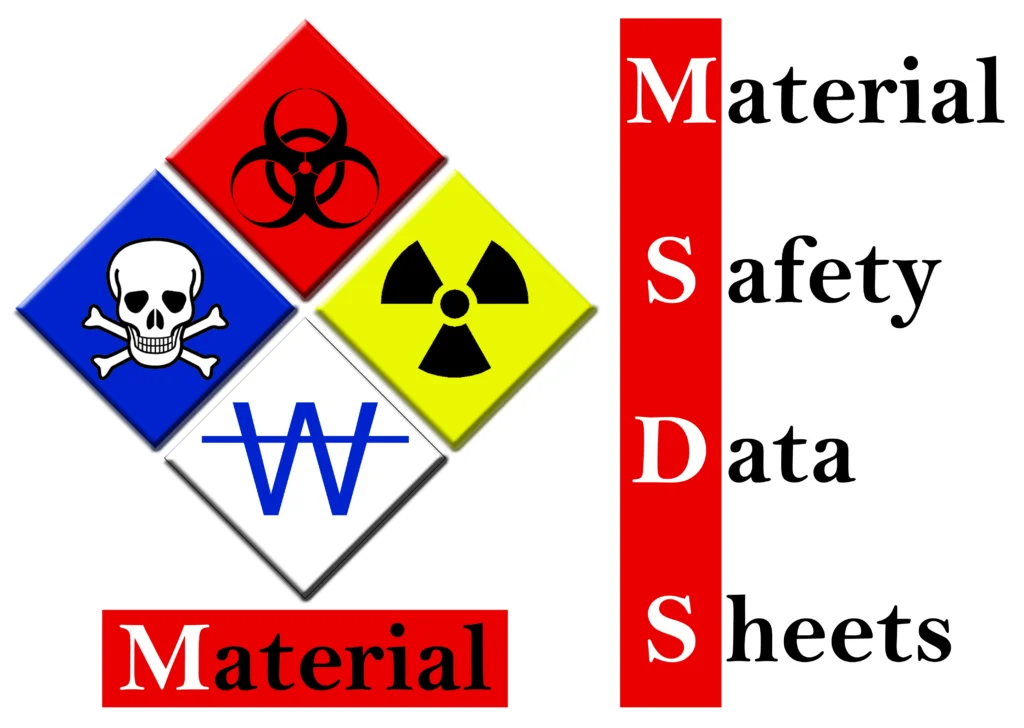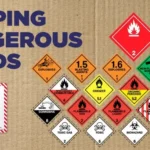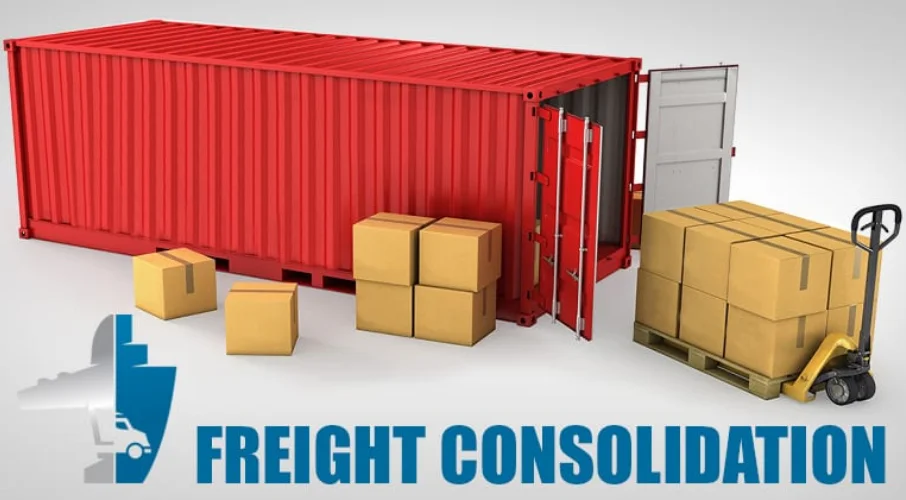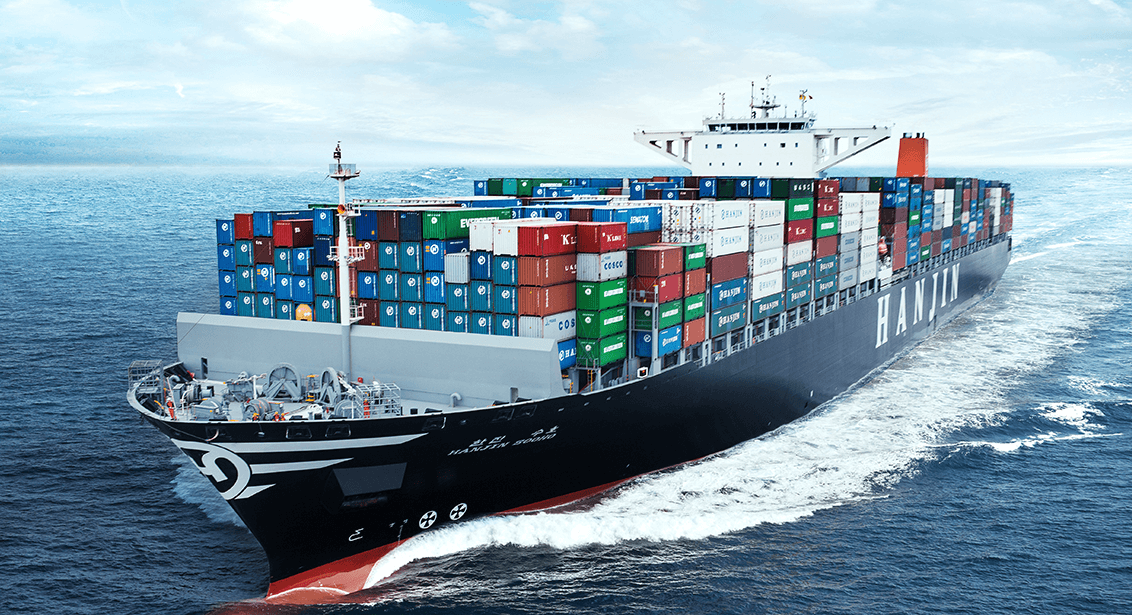In today’s global economy, the safe handling and transportation of chemicals are paramount. Whether you’re a manufacturer, importer, exporter, or logistics provider, understanding the risks associated with chemical products and how to mitigate them is essential. This is where the Material Safety Data Sheet (MSDS) comes into play. The MSDS serves as a critical resource for anyone involved in the supply chain of hazardous materials, providing detailed information about the properties and handling of these substances. By adhering to the guidelines set forth in the MSDS, companies can ensure the safety of their employees, comply with international regulations, and avoid costly legal issues.
Table of Contents
1. What is MSDS?

The Material Safety Data Sheet, commonly abbreviated as MSDS, is a document that provides comprehensive information on the properties, hazards, safe handling, and emergency measures related to chemical substances and mixtures. Originating from regulatory requirements, the MSDS is designed to communicate essential safety information to workers, emergency responders, and regulatory authorities.
Historical Background
The concept of the MSDS has evolved over time to meet the growing need for standardized safety information. In the United States, the Occupational Safety and Health Administration (OSHA) established the requirement for MSDS in 1983 under the Hazard Communication Standard (HCS). This regulation mandated that chemical manufacturers and importers provide MSDS for hazardous chemicals to downstream users. Similarly, the European Union’s REACH (Registration, Evaluation, Authorisation, and Restriction of Chemicals) regulation, implemented in 2007, also requires detailed safety information for chemical substances.
Regulatory Requirements
Various international standards govern the creation and distribution of MSDS. In addition to OSHA and REACH, other regulatory bodies such as the Globally Harmonized System of Classification and Labelling of Chemicals (GHS) have established guidelines to ensure consistency and clarity in the presentation of safety data. Compliance with these regulations is not only a legal obligation but also a critical component of workplace safety and environmental protection.
2. Components of MSDS
An MSDS is typically divided into specific sections, each providing detailed information about different aspects of the chemical substance or mixture. Understanding these components is crucial for interpreting the MSDS effectively.
1. Identification of the Substance/Mixture and the Company
This section provides the chemical name, product identifier, and contact details of the manufacturer or supplier.
2. Hazard(s) Identification
This section describes the potential hazards associated with the chemical, including physical and health hazards, and provides precautionary statements.
3. Composition/Information on Ingredients
This section lists the chemical ingredients, including any impurities and stabilizing additives, along with their concentrations.
4. First-Aid Measures
This section provides instructions on how to administer first aid in case of exposure, including inhalation, skin contact, eye contact, and ingestion.
5. Fire-Fighting Measures
This section outlines the appropriate fire-fighting equipment and procedures, as well as the hazards posed by the chemical in case of a fire.
6. Accidental Release Measures
This section provides guidelines for responding to spills, leaks, or other accidental releases, including containment and cleanup procedures.
7. Handling and Storage
This section offers recommendations for the safe handling and storage of the chemical, including any specific requirements for temperature, humidity, or ventilation.
8. Exposure Controls/Personal Protection
This section details the permissible exposure limits, engineering controls, and personal protective equipment (PPE) required to minimize exposure.
9. Physical and Chemical Properties
This section provides information on the physical and chemical properties of the substance, such as boiling point, melting point, vapor pressure, and solubility.
10. Stability and Reactivity
This section describes the stability of the chemical under various conditions and its potential to react with other substances.
11. Toxicological Information
This section provides information on the health effects of exposure to the chemical, including acute and chronic toxicity.
12. Ecological Information
This section outlines the environmental impact of the chemical, including its potential to persist in the environment and bioaccumulate.
13. Disposal Considerations
This section provides guidelines for the safe disposal of the chemical and any contaminated materials.
14. Transport Information
This section includes information on the safe transport of the chemical, including any special precautions and regulatory requirements.
15. Regulatory Information
This section lists the regulatory status of the chemical, including any applicable laws and regulations.
16. Other Information
This section includes any additional information that may be relevant, such as the date of the last revision and references to relevant literature.
By understanding the detailed components of the MSDS, companies can ensure that they handle and transport chemicals safely and in compliance with regulatory requirements. Proper use of the MSDS not only protects workers and the environment but also mitigates legal risks and enhances overall safety.
3. Importance of MSDS for Importers
The Material Safety Data Sheet (MSDS) is not just a regulatory requirement; it is an invaluable tool for importers dealing with chemical substances. The importance of MSDS for importers can be understood under several key aspects:
Safety Compliance
For importers, adhering to safety regulations is a top priority. The MSDS provides detailed information on the chemical’s properties, health hazards, and safe handling practices. This ensures that all personnel, from warehouse workers to transportation staff, are aware of the risks and know how to manage them. Non-compliance can lead to severe penalties, including fines and suspension of operations.
Risk Management
An MSDS helps importers identify potential hazards associated with the chemical products they are handling. This information is crucial for risk assessment and management. By understanding the toxicity, flammability, and reactivity of a substance, importers can implement appropriate safety measures, such as proper storage conditions and emergency response plans. This proactive approach minimizes the risk of accidents and incidents, protecting both people and property.
Proper Handling and Storage During Shipping
One of the most critical aspects of importing chemicals is ensuring they are handled and stored correctly during shipping. The MSDS outlines specific requirements for temperature, humidity, ventilation, and packaging, which are essential for maintaining the integrity and safety of the chemical. Following these guidelines helps prevent leaks, spills, and contamination, ensuring the chemicals arrive at their destination in good condition.
Legal Implications and Liabilities
Failure to comply with MSDS requirements can result in significant legal implications and liabilities. Importers are responsible for ensuring that their products meet all safety and regulatory standards. In the event of an incident, such as a chemical spill or exposure, having an up-to-date and accurate MSDS can be a crucial defense in legal proceedings. It demonstrates that the importer took all necessary precautions and provided essential safety information to their employees and customers.
Read More:
- Shipping from China to Saudi Arabia 2024
- Shipping from China to UAE
- Shipping From China To ALGERIA
- Shipping From China To Netherlands
- Shipping From China To UNITED KINGDOM
- Shpping From China TO UNITED STATES
4. How to Read and Interpret MSDS
Understanding how to read and interpret an MSDS is crucial for anyone involved in handling chemical substances. Each section of the MSDS provides specific information that can help you understand the risks associated with a chemical and how to manage them.
Detailed Guide on How to Read Each Section of MSDS
- Identification: This section identifies the chemical product and supplier. It includes the product name, chemical name, and contact details of the manufacturer or supplier.
- Hazard(s) Identification: This section outlines the physical and health hazards associated with the chemical, using standardized symbols and warning phrases.
- Composition/Information on Ingredients: This section lists the chemical ingredients and their concentrations, including any impurities or additives.
- First-Aid Measures: This section provides instructions on how to administer first aid in case of exposure, detailing actions for inhalation, skin contact, eye contact, and ingestion.
- Fire-Fighting Measures: This section includes information on suitable extinguishing methods, specific hazards arising from the chemical, and protective equipment for firefighters.
- Accidental Release Measures: This section outlines procedures for dealing with spills or leaks, including containment methods and cleanup procedures.
- Handling and Storage: This section offers recommendations for safe handling practices and storage conditions to minimize risk.
- Exposure Controls/Personal Protection: This section details permissible exposure limits, engineering controls, and personal protective equipment (PPE) required.
- Physical and Chemical Properties: This section provides information on the substance’s properties, such as boiling point, melting point, and solubility.
- Stability and Reactivity: This section describes the chemical’s stability under various conditions and its potential to react with other substances.
- Toxicological Information: This section provides data on the health effects of exposure, including symptoms of overexposure and long-term health risks.
- Ecological Information: This section outlines the environmental impact of the chemical, such as its potential to bioaccumulate and its persistence in the environment.
- Disposal Considerations: This section provides guidelines for the safe disposal of the chemical and any contaminated materials.
- Transport Information: This section includes information on the safe transport of the chemical, including any special precautions.
- Regulatory Information: This section lists the regulatory status of the chemical, including applicable laws and regulations.
- Other Information: This section includes any additional relevant information, such as the date of the last revision and references to supporting literature.
Common Terminology Used in MSDS
Understanding the terminology used in MSDS is crucial for interpreting the information correctly. Here are some common terms you may encounter:
- CAS Number: A unique numerical identifier assigned to every chemical substance by the Chemical Abstracts Service.
- LD50: Lethal Dose 50%, the dose required to kill half the members of a tested population. It is a measure of a substance’s acute toxicity.
- PEL: Permissible Exposure Limit, the maximum amount of a chemical to which a worker may be exposed.
- TLV: Threshold Limit Value, the level of exposure that a worker can be exposed to day after day without adverse effects.
- SDS: Safety Data Sheet, the updated version of MSDS, as per the Globally Harmonized System (GHS).
Tips for Interpreting MSDS Data
- Always start by reading the identification and hazard(s) identification sections to understand the basic risks.
- Pay close attention to the first-aid measures and fire-fighting measures to prepare for emergencies.
- Use the exposure controls/personal protection section to ensure you have the appropriate safety equipment.
- Refer to the regulatory information section to ensure compliance with local laws and regulations.
5. Common Mistakes to Avoid with MSDS
While MSDS is an invaluable resource, it is often misinterpreted or mishandled. Here are some common mistakes to avoid:
Misinterpretation of Data
One of the most common mistakes is the misinterpretation of the data provided in the MSDS. This can happen due to a lack of understanding of the terminology or a superficial reading of the document. It’s crucial to thoroughly read and understand each section of the MSDS to ensure accurate risk assessment and implementation of safety measures.
Failure to Update or Maintain MSDS
Regulations and chemical compositions can change over time, making it essential to keep MSDS documents up-to-date. Failing to update the MSDS can result in outdated safety practices that may not comply with current regulations. Regularly review and update your MSDS to ensure it reflects the most current information.
Non-Compliance with Local Regulations
Different countries and regions have their own regulations regarding chemical safety and MSDS requirements. Importers must ensure that their MSDS complies with local regulations, such as OSHA in the United States or REACH in the European Union. Non-compliance can lead to legal penalties and jeopardize your business operations.
By understanding the importance of MSDS, knowing how to read and interpret it, and avoiding common mistakes, importers can ensure the safe and compliant handling of chemical substances. This not only protects employees and the environment but also mitigates legal risks and enhances overall safety.
By expanding these sections, you provide a thorough understanding of the importance of MSDS for importers, practical guidance on interpreting MSDS, and tips for avoiding common mistakes, offering real value to your readers while adhering to SEO best practices.
FAQs
To further assist our readers in understanding MSDS (Material Safety Data Sheet), we have compiled a list of frequently asked questions. These FAQs address common concerns and provide additional clarity on the topic.
1. What is the difference between MSDS and SDS?
The terms MSDS (Material Safety Data Sheet) and SDS (Safety Data Sheet) are often used interchangeably. However, SDS is the term used under the Globally Harmonized System (GHS) for the classification and labeling of chemicals. The transition from MSDS to SDS reflects a move toward standardization and improved communication of hazardous information globally.
2. Are MSDS required for all chemicals?
Yes, MSDS are required for all hazardous chemicals. Regulatory bodies like OSHA in the United States and REACH in the European Union mandate that manufacturers and suppliers provide MSDS for any chemical classified as hazardous.
3. How often should MSDS be updated?
Regulations require that MSDS be reviewed and updated regularly, especially when new information about the chemical’s hazards or safe handling becomes available. It is a best practice to review MSDS at least annually to ensure compliance and safety.
4. Who is responsible for providing MSDS?
Chemical manufacturers, importers, and suppliers are responsible for creating and providing MSDS for their products. They must ensure that the MSDS is accurate, up-to-date, and accessible to all downstream users, including employers and employees who handle the chemicals.
5. How should MSDS be stored and accessed?
MSDS should be readily accessible to all employees who may be exposed to hazardous chemicals. They can be stored in physical form, such as binders, or electronically, provided that they are easy to access in an emergency. Employers must ensure that employees know how to locate and understand the MSDS.
6. What should I do if I cannot find the MSDS for a chemical?
If you cannot find the MSDS for a chemical, contact the manufacturer or supplier directly to request a copy. They are legally required to provide it. Additionally, you can check online databases that host MSDS documents, but always verify that you have the most recent version.
7. Can MSDS be provided in languages other than English?
Yes, MSDS can and should be provided in the local languages of the countries where the chemicals are being used. This ensures that all workers can understand the safety information and follow the proper precautions.
References
For those interested in further reading and more detailed information on MSDS, the following references provide authoritative and comprehensive resources:
- OSHA (Occupational Safety and Health Administration) – Hazard Communication Standard:
- OSHA’s official page on Hazard Communication: OSHA Hazard Communication
- Provides detailed guidelines and regulatory requirements for MSDS in the United States.
- REACH (Registration, Evaluation, Authorisation, and Restriction of Chemicals) – European Chemicals Agency (ECHA):
- ECHA’s official page on REACH: ECHA REACH
- Comprehensive resource on European Union regulations related to chemical safety and MSDS requirements.
- Globally Harmonized System of Classification and Labelling of Chemicals (GHS):
- United Nations Economic Commission for Europe (UNECE): UNECE GHS
- Provides information on the global standard for chemical classification and labeling, including SDS requirements.
- NIOSH (National Institute for Occupational Safety and Health) – Pocket Guide to Chemical Hazards:
- NIOSH Pocket Guide: NIOSH Pocket Guide
- A valuable resource for understanding chemical hazards and safety measures.
- CDC (Centers for Disease Control and Prevention) – Chemical Safety Information:
- CDC Chemical Safety: CDC Chemical Safety
- Offers extensive information on chemical safety and MSDS.





















 Afrikaans
Afrikaans Shqip
Shqip አማርኛ
አማርኛ العربية
العربية Հայերեն
Հայերեն Azərbaycan dili
Azərbaycan dili Euskara
Euskara Беларуская мова
Беларуская мова বাংলা
বাংলা Bosanski
Bosanski Български
Български Català
Català Cebuano
Cebuano Chichewa
Chichewa 简体中文
简体中文 繁體中文
繁體中文 Corsu
Corsu Hrvatski
Hrvatski Čeština
Čeština Dansk
Dansk Nederlands
Nederlands English
English Esperanto
Esperanto Eesti
Eesti Filipino
Filipino Suomi
Suomi Français
Français Galego
Galego ქართული
ქართული Deutsch
Deutsch Ελληνικά
Ελληνικά Kreyol ayisyen
Kreyol ayisyen Harshen Hausa
Harshen Hausa Ōlelo Hawaiʻi
Ōlelo Hawaiʻi עִבְרִית
עִבְרִית हिन्दी
हिन्दी Hmong
Hmong Magyar
Magyar Íslenska
Íslenska Igbo
Igbo Bahasa Indonesia
Bahasa Indonesia Gaeilge
Gaeilge Italiano
Italiano 日本語
日本語 Basa Jawa
Basa Jawa ಕನ್ನಡ
ಕನ್ನಡ Қазақ тілі
Қазақ тілі ភាសាខ្មែរ
ភាសាខ្មែរ 한국어
한국어 كوردی
كوردی Кыргызча
Кыргызча ພາສາລາວ
ພາສາລາວ Latin
Latin Latviešu valoda
Latviešu valoda Lietuvių kalba
Lietuvių kalba Lëtzebuergesch
Lëtzebuergesch Македонски јазик
Македонски јазик Malagasy
Malagasy Bahasa Melayu
Bahasa Melayu മലയാളം
മലയാളം Maltese
Maltese Te Reo Māori
Te Reo Māori मराठी
मराठी Монгол
Монгол ဗမာစာ
ဗမာစာ नेपाली
नेपाली Norsk bokmål
Norsk bokmål پښتو
پښتو فارسی
فارسی Polski
Polski Português
Português ਪੰਜਾਬੀ
ਪੰਜਾਬੀ Română
Română Русский
Русский Samoan
Samoan Gàidhlig
Gàidhlig Српски језик
Српски језик Sesotho
Sesotho Shona
Shona سنڌي
سنڌي සිංහල
සිංහල Slovenčina
Slovenčina Slovenščina
Slovenščina Afsoomaali
Afsoomaali Español
Español Basa Sunda
Basa Sunda Kiswahili
Kiswahili Svenska
Svenska Тоҷикӣ
Тоҷикӣ தமிழ்
தமிழ் తెలుగు
తెలుగు ไทย
ไทย Türkçe
Türkçe Українська
Українська اردو
اردو O‘zbekcha
O‘zbekcha Tiếng Việt
Tiếng Việt Cymraeg
Cymraeg יידיש
יידיש Yorùbá
Yorùbá Zulu
Zulu